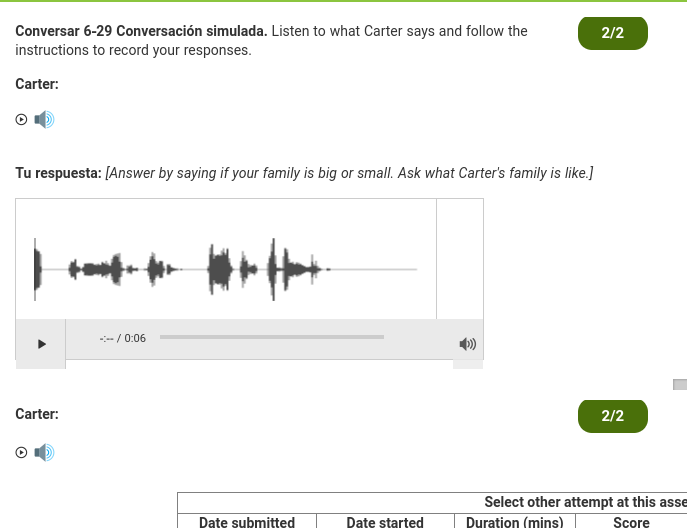Exploring Culture
These products and practices helped me better understand the values and attitudes in the Spanish culture as my own by being able to understand the words verbally and apply connections towards the importance of the culture and use them in the correct terms. They challenged my worldview because they made me think a lot differently and more in-depth about my thought process when just thinking about the Hispanic culture and how there are different ways to show expression. It caused me to work in my mind and through my speaking; usually, when we think about the Spanish heritage, it consists of people talking super fast and such, but these practices allowed me to understand that is not the case; every word is said entirely through. While in class, we needed to be able to talk and say sentences in Spanish, so that consisted of pronunciation which I had to adjust.
Interpersonal Communication
My talk abroad was very nerve-racking; it was my first time speaking to someone from a Spanish-speaking culture whom I did know much. However, it was also a perfect way to practice my oral representation and become comfortable speaking the language. I developed the confidence to address and have conversations with the other person.
Within each assignment, I have grown dramatically in how I organize my sentences to the non-verbal actions that helped me develop better conversations. In the beginning, I was apprehensive about how advanced the other person on the screen was, but luckily they made me feel comfortable. Also, before doing my talk abroad, I could sit down and prepare beforehand to organize what I would say, which helped a lot. However, during the sessions, I needed to listen to what the other person was saying and read her actions through her facial expressions and body language. I would try and listen to all of the words that are in the sentences that are being spoken. I sometimes found it hard to say the correct words and thought that my sentences could have made more sense, but I learned to take my time and think about what I wanted to say in English and how I would say it in Spanish.
Presentational Speaking
One presentational speaking I had to do in SPAN 102 was for Proyecto 8, where we had to make a dish and present and explain the making of the dish in Spanish. This overall project interested me because I connected something I participate in daily to explain it in another language fully.
Some of the presentations that I have completed in this course were Proyecto 8, where we had to make a dish, and also the first project in Spanish 102 which insisted that we explain our family and their traits. In both presentations, I found it very difficult to find the correct words to say and not want to explain them in English. The way I overcame those challenges was to tackle them and come to an understanding that if I can find the right words to form a correct sentence, then I should be able to develop a good presentation. Also, in contrasena, they give us excellent examples and new vocabulary words that boost our learning and help us create the piece we need. What I would do differently next time would be to set up more time for myself; I would organize my strategy and prepare what I will talk about. I believed in showing great representation throughout both of the projects.
Presentational Writing
Another project that had to be completed was an inforgrafic explaining and sharing information on mental health.

Interpretive Listening
Throughout the semester, we had to engage in activities through contrasena to listen to the audio, and we also had to respond to each recording. There had to be an understanding of the audio recording and the ability to develop excellent listening skills to respond correctly.

In this reflection, we had to talk about our families and explain who they are and how big or small our families were. I had never described my family in Spanish, so this wasn’t easy to grasp. Luckily, we had those vocabulary words that helped up represent them. Sometimes I get baffled when it comes to saying a sentence, but in Spanish, it is often written backward; looking at it from a nonhispanic speaker, that is the correct way to phrase it and write the sentence. What I found most interesting was how close Spanish is to English; I picked my brain to understand how I can explain this in Spanish without trying to connect it to English.